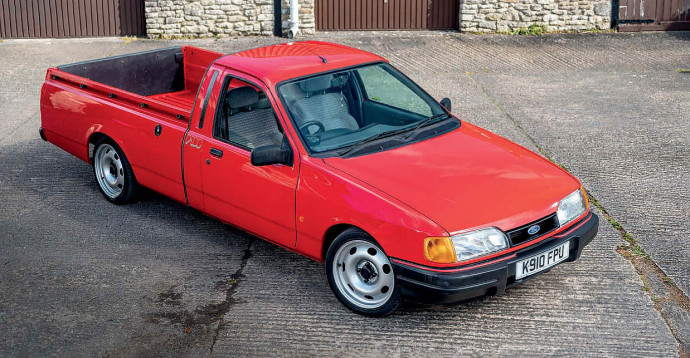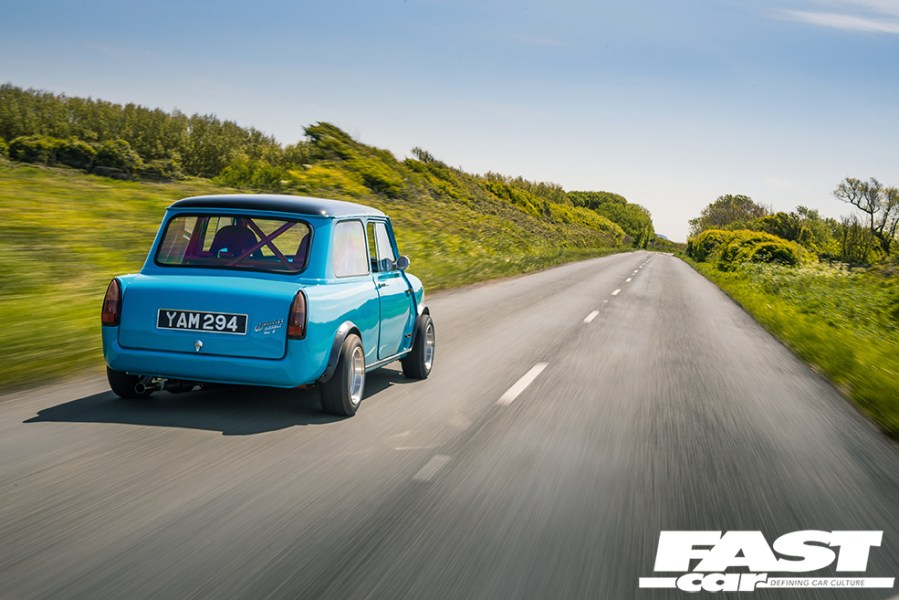Just modified cars for the well-heeled, right? Yes and no. Allow Fast Car to define the undefinable and answer the 64 million dollar question, what is a RestoMod?
One of my lecturers at university had a bugbear about us students always going to Wikipedia when faced with a new question. I understand his logic, not everything on there is verified and it’s healthy to read around a given subject. However, it often seems like a good place to begin. Professor Jones, if you’re reading this, I’m sorry but I’m going to quote the online behemoth as a logical starting place. That, at least, was my intention but even Wikipedia doesn’t attempt to be definitive in its definition. Instead, they quote the legend that is Jay Leno: “RestoModding is when an old car is modernized with an updated suspension, brakes, tires, and electronics. If you RestoMod in the right way, you can revert back to stock at any time.”
Reinventing the Wheel? RestoMods…Rebranded Modifieds?

A Singer in its native California. RestoMod California Dreamin’. How jealous are we? Very.
RestoModding is synonymous with clever reengineering but the look is just as important an identifying factor. Singer’s mouth-watering creations are arguably the most famous of the breed. Despite the company being established in 2009, they have entered the public consciousness in recent years with their perfected Porsches being widely featured in mainstream motoring outlets. Using a 964-era 911 as a starting point, the whole car is enhanced including a high-performance motor, bespoke suspension and high-quality retrimmed interiors. Staying with Stuttgart, some similarly well-known outfits can be used to highlight what constitutes a resto-mod.
We’ve all been down a YouTube wormhole looking at the videos of Japanese OG, Akira Nakai-San travelling the globe fitting his signature outrageous body kits. These have a distinct identity but are seen by most as modified cars albeit at the high end of the scale. Is there a gearhead left on the planet that hasn’t watched Sheffield born but LA-based Magnus Walker’s iconic film, Urban Outlaw? The clothes designer turned Porsche aficionado, is famous for his projects that take inspiration from motorsport, art and fashion. He openly describes that look as outlaw or hot rod.
Old is Gold? Are All RestoMods Classics?

The gorgeous Kimera EVO37 RestoMod. How did those tire marks get there?
Whilst the factory-esque aesthetic of the Singer cars is backdated to the pre-rubberized bumper look of the early seventies, resto-mod cars don’t always have an overtly retro aesthetic. Yet another company remastering the 911 is Gunther Werks. Take their Project Tornado as an example. They use a 993 base car from the mid-nineties and squeeze 700bhp from the air-cooled turbocharged motor.
An electronically-controlled active suspension system with three switchable levels of damping provides evidence of new technology improving the dynamics of the platform. All standard RestoMod fare but the approach to the looks is different. Whilst still following a formula that is evolutionary as opposed to revolutionary, certain aspects are modernized. LED lights, enhanced aero and smother bumpers result in a RestoMod aesthetic that looks back but simultaneously throws in a contemporary dash of modernization to the blend. This isn’t reserved just for Porsches, Kimera applies a similar approach to their EVO37 model despite the silhouette being inspired by the legendary Group B Lancia 037 rally car from the eighties.
ICON living the RestoMod high life
Highs and Lows, the Differing Altitudes of the RestoMod World
It’s not just sports cars that are given the RestoMod treatment. The offroad sector is huge with companies such as ICON breathing enhanced life into classic Ford Broncos and Toyota Land Cruisers in sunny California. In Britain, Kingsley has shot to fame for their exquisite take on the classic Range Rover. The advances in damper technology, tires and powerplants make them serious offroad contenders. An important part of the RestoMod DNA, is identifying lovable characteristics of the original platform and enhancing them. Take Jenson International Automotive (JIA), they use the iconic Jenson Interceptor as a starting point. These cars were produced between 1966 and 1976 and were revered grand tourers.
JIA respect the Italian styling and leave the cars externally subtle, the interiors were luxurious in the first place but with their product, there is more leather and discreet modern technology to aid those continent-crushing jaunts. The original cars were fitted with big block Chevrolet V8s and JIA offers LS3 fuel-injected V8s with modifications to suit the customer’s needs. The bespoke alloy wheels ape the style of the originals but are enlarged to house AP Racing BBKs. Even the beloved hot hatch has got in on the act. Tolman take a Peugeot 205 GTI and invest over 700 hours into each car. Their tagline is “A masterpiece. Improved.” This is RestoModding in three words!
They take pride in the fact that despite a comprehensive package of enhancement, their product can be returned to standard. Their cars start at nearly $70,000 or £55,000 in their native Britain. This is a big chunk of change for a hot hatch but given the ever-increasing price of a decent standard car and the work and componentry that goes into the 200bhp rocket ship, it’s not hard to account for that sum.

Are OEM+ Builds Classed as RestoMods?
The quick answer to this question is “sometimes”. OEM+ builds account for a significant percentage of our scene and they are often the epitome of cool. The lines get a bit blurred here though. Let’s use one of the early adopters of the OEM+ look, the water-cooled Volkswagen scene. A Mk2 Golf with rare Recaro option seats, BBS RS wheels and some period tuning parts or even an engine conversion dating back to around the time would probably be classed as an OEM+ or period-correct build.
The same car with a 2:0 TFSI engine transplant, modern ECU and the latest KW suspension could probably still fall under the OEM+ banner given the inhouse choice of engine but is also worthy of the RestoMod moniker given the more modern power and driving dynamics whilst still being packaged in the classically handsome second-generation Golf suit.

Would you swap air-cooled character for electric zip? Are ElectroMods the new RestoMods?
Electrifying Topic of Debate, RestoMod Goes Electric
The world of RestoModding is by its very nature a bit of a tale of two cities. Whilst it appeals to those who look back to cars with a history and a soul, it simultaneously looks to the future for new tech and modern thrills. It’s no real surprise then that a spinoff movement known as ‘ElectroModding’ has developed. Just like electrification in modern cars, it’s something of an emotive topic.
Some point to the reduced emissions of the retrofitted electric motor in an older car, not to mention the linear power delivery and blistering performance some of these EV-powered classics are producing. Others point to the fact that such project cars are often for occasional use and question whether a vehicle that may cover comparatively few miles will warrant the air miles and ecological impact associated with the production of the electric motor and accompanying batteries. Whatever your standpoint on the subject, as electric vehicles become more commonplace, the motors will become cheaper and accessible for garages and home tuners alike.

Gary York’s BMW M47-powered Ford P100 RestoMod
Money Matters, RestoMods for the People!
Given the standards of engineering, components fitted and materials used, it’s no surprise that the RestoModded cars mentioned above all come at a substantial price. As with all sectors of the modified car world though, there’s nothing to stop the have-a-go heroes producing their own. Sister mag, Classic Ford ran a RestoMod Special for their August 2023 issue. Gary York’s P100 pickup was featured. He loved the practicality of the cool commercial but was keen to change the asthmatic powerplant it was born with. The original 1800 diesel was pulled and replaced with a more modern BMW M47 DERV-powered motor. He now reaps the benefit of increased torque, bhp and even economy.
What separates this particular build from any number of engine-swapped cars that the mechanically minded have been churning out for decades is the whole package. The car retains its P100 identity and utilitarianism but a closer look reveals the enhancements. The steel wheels are bigger than standard to allow for improved looks, bigger brakes and a larger rubber footprint. The ride height is lowered due to the upgraded suspension for a dynamically superior driving experience. The interior is standard though and the respray was in the original hue. Here ingenuity has reigned supreme and the car owes the builder $5000 or £4000 in his native Blighty. What are you waiting for? Let us know if you’ve got a feature-worthy RestoMod. We may well like the cut of your jib.




